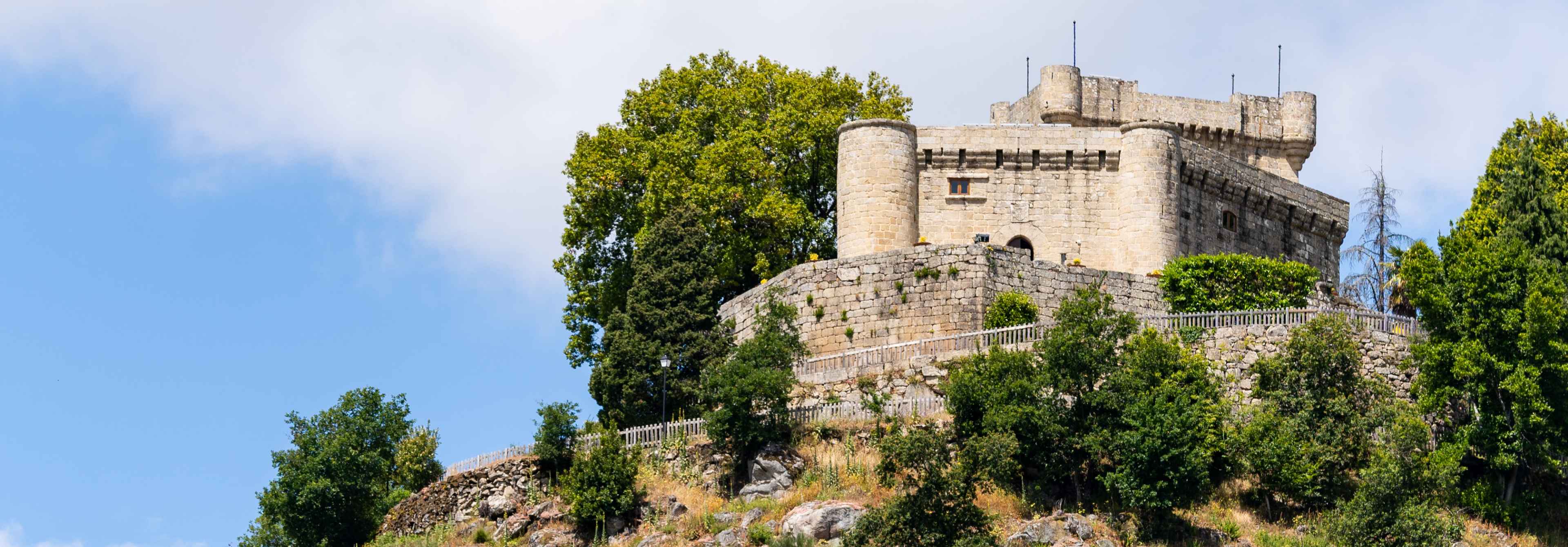A FAIRY TALE CASTLE. MYTHS AND LEGENDS
Many legends surround the mysterious Sobroso Castle. These stories are embedded in the social imaginary of the region as beautiful examples of the rich intangible heritage linked to the fortress.
ALMANZOR AND THE CASTLE
In 997, Almanzor launched an expedition to Galicia, aiming to arrive to Compostela. It is said that he even destroyed the better part of what used to be the basilica and made the Christian prisoners carry its bells on their backs to take them to Córdoba as a war trophy
Legend has it that in that expedition, Almanzor arrived to the lands of Toroño, near Sobroso Castle, and decided to send a detachment commanded by Abd-El Krim to inspect the castle and come up with a plan to attack it, while the rest of the soldiers rested not so far away.
But Almanzor's reputation had become well-known during that journey; so was the case that both the neighbours and the owners of the castle had run away, and Abd-El Krim was able to occupy the castle without resistance. Once he settled in, he informed Almanzor and emptied the larders to have a big celebration to welcome his leader.
There was a blind beggar in the area who went to the castle from time to time to entertain the lords. This man, unaware that Sobroso was in the hands of the Saracen, started going up the slope of Mount Landín, announcing his arrival with the sound of his hurdy-gurdy and singing some old cantiga. Abd-El Krim heard that sweet and unhurried plaint and was surprised by the blind man's unrushed pace, with apparent indifference, which made his blood boil.
He took the beggar's attitude as an insult and his music as mockery, so he cut off his hands with his scimitar, slit his throat, and threw the body away. Then, he went back to prepare the event.
The leader arrived to Sobroso that night, and when the banquet had already started, the wind started to blow mid-celebration, carrying a sweet and unhurried plaint that made the crowd go silent as the sound slipped through the battlements. Almanzor's soldiers were so affected by it that he gave orders to make the sound stop, but the hurdy-gurdy kept on resounding throughout the air, while the soldiers kept quiet.
Abd-El Krim, on his knees, explained what had happened earlier that afternoon: a Christian man had appeared, playing an instrument, so he cut his hands and throat, and disposed of the body throwing it at the foot of the wall. The commander told them to find the new troubadour and to punish him in the same way, but the soldiers could not find anybody.
Almanzor demanded to see the body of the blind beggar, so he went to the place it was thrown aside with a group of soldiers. When they arrived there, the sound of the hurdy-gurdy grew louder and the plaint turned sadder. Almanzor himself could see the instrument magically floating a few metres away from the body, being played by the blind man's cut-off hands.
In the village, it is still said that when a tragedy is about to happen in Galicia, the blind man's sad melody and his hurdy-gurdy can be heard in the air, playing his song.
THE ROYAL WEDDING
Sobroso Castle is said to be the place where Elizabeth of Aragon —daughter of King Pedro III—and Denis of Portugal, the troubadour king, might have tied the knot.
In 1282, the queen known as “A Rainha Santa” was about to marry Denis of Portugal. However, since Aragon and Portugal were clearly in dispute with the Holy See, the wedding had to take place independently of Rome, in a safe stronghold.
Rome became enraged when the Aragonese claimed the Crown of Sicily that Pope Innocent IV had offered to Charles of Anjou. For his part, the Portuguese king had earned the enmity of the clergy when he repressed the Church's alleged intrusions in his kingdom.
In this context, according to legend, Sobroso Castle was an ideal neutral place to hold the wedding. They say that the exact location of the ceremony was the chapel in Troncoso, more precisely in Santa Baia de Mondariz, nowadays known as Mondariz-Balneario.
The royal couple celebrated their union there, accompanied by abbots, infantrymen, noblemen and soldiers from both countries.
There are other myths surrounding the “Rainha Santa”, as Saint Elizabeth’s was called in Portugal, such as the one that tells us that when the troubadour king Denis reproached her generosity, saying that her alms were going to lead the Crown to bankruptcy, those handouts turned into roses, so that her husband's reproaches ceased. That is why sculptors represent her worshipped image holding a bunch of roses in her hands, just as you can see in the halls of the Sobroso fortress nowadays.
It is also said that the queen took several trips in the lands of Sobroso, and used to visit the castle, mid-pilgrimage, to take a rest stop. She visited two times the reliquary of Saint James, in Compostela, to celebrate the Jubilee, and donated valuable presents that can still be admired in the cathedral's treasure room and in the shrine of Nosa Señora da Franqueira.





